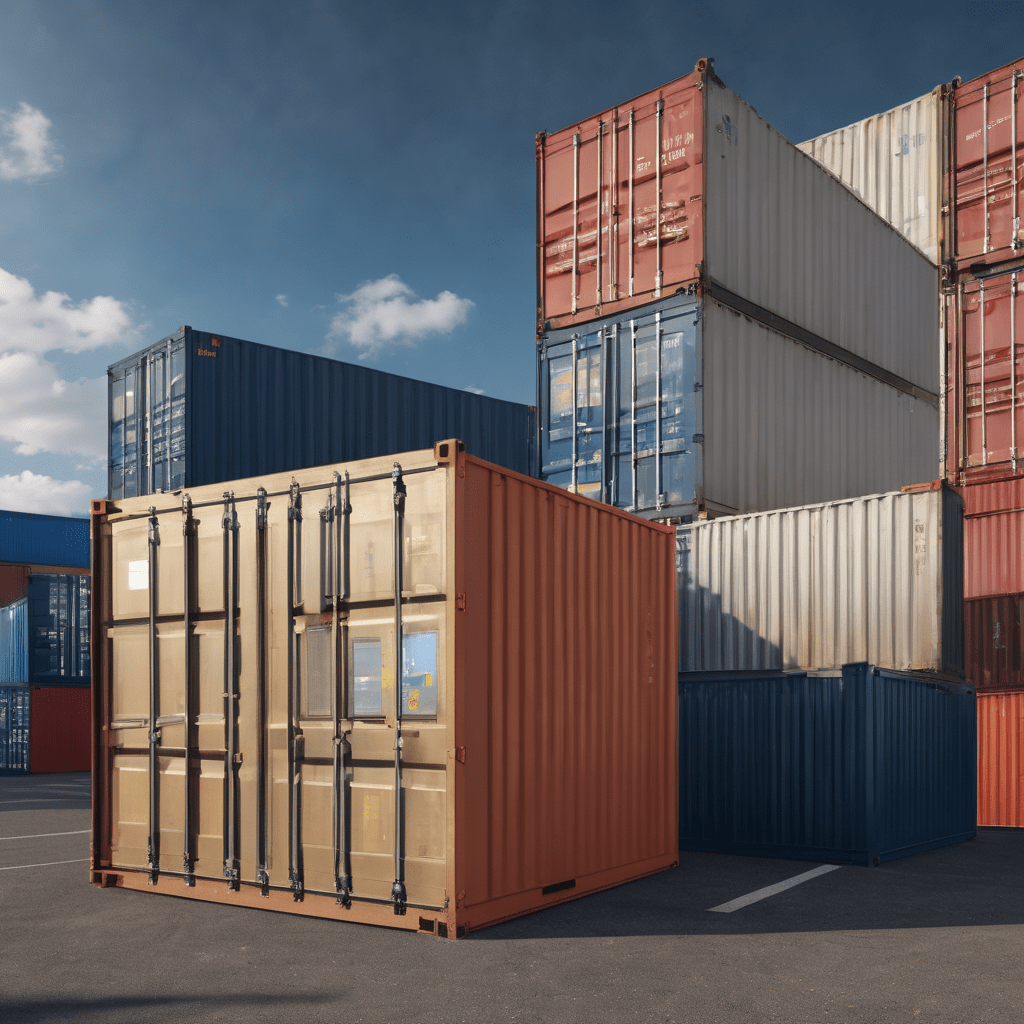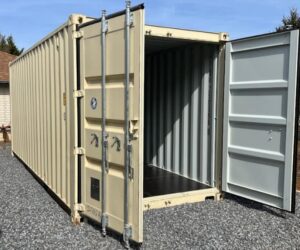How Long Does a Shipping Container Last? Unveiling the Secrets of Container Lifespan

Understanding the Basics
Shipping containers are the backbone of global trade, silently transporting goods across oceans while withstanding extreme weather conditions, stacking, and unstacking. These robust metal structures are engineered to endure significant stress, making them a reliable solution for cargo transport. But how long do shipping containers last? This question is crucial for businesses and individuals who use them for storage, housing, and other purposes. In this comprehensive guide, we’ll explore the factors that impact container life expectancy, discuss alternative uses beyond shipping, and provide insights into maintaining their structural integrity to maximize their lifespan and functionality.
What Is a Shipping Container?
Shipping containers are standardized metal boxes designed for transporting goods via ships, trains, or trucks. They come in various sizes, with the most common being 20-foot and 40-foot containers. These durable steel structures are essential for global commerce, ensuring cargo reaches its destination safely and efficiently.

Why Container Longevity Matters
The lifespan of a shipping container directly affects operational costs and sustainability. Containers built to last reduce replacement frequency, lower carbon footprints, and minimize waste. By maintaining and repurposing containers, businesses and individuals can maximize their value while contributing to a more sustainable environment.
Factors Affecting Shipping Container Lifespan
Material Quality and Construction
Shipping containers are primarily made from Corten steel or weathering steel, known for its rust resistance and durability. High-quality materials extend container life by preventing premature corrosion and structural degradation.
Climate and Environmental Conditions
Exposure to UV radiation, saltwater, and extreme weather significantly impacts container longevity. A shipping container used in coastal environments faces higher risks of corrosion compared to one used in a dry inland region.
Shipping Container Maintenance
Regular container inspections and repairs are crucial for extending lifespan. Key maintenance tasks include:
Rust removal and repainting with protective coatings
Inspecting and reinforcing container roof integrity
Container ventilation to prevent condensation and mold growth
Checking container doors and foundation for structural stability
Cargo Handling and Stacking Practices
Improper loading, overstacking, or rough handling can damage a container’s structural integrity. Using proper stacking methods and distributing weight evenly helps prevent deformation and prolongs container life.
Alternative Uses for Shipping Containers
Shipping containers have gained popularity beyond traditional freight transport. Due to their durability and modularity, they are repurposed for various innovative applications across different industries.
Container Homes and Offices
The trend of converting shipping containers into residential and commercial spaces continues to grow. Their adaptability makes them ideal for modern, sustainable housing projects, offices, and even co-working spaces. With proper container insulation, ventilation, and structural reinforcements, a container home lifespan can exceed 50 years. Additionally, their portability allows for easy relocation, making them a flexible option for various housing needs. Many old containers are repurposed into container homes, offices, or retail spaces. With proper insulation and modifications, a shipping container home lifespan can exceed 50 years.
Pop-up Shops and Kiosks
Retail businesses have embraced shipping containers as a creative and cost-effective alternative to traditional brick-and-mortar stores. Their sturdy construction, weather resistance, and ease of modification allow for quick and affordable setup of retail spaces. Shipping containers are also used as mobile kiosks, food stands, and exhibition booths, providing entrepreneurs with a scalable and adaptable business model. Containers provide cost-effective, mobile business solutions for pop-up stores and food kiosks, offering entrepreneurs a versatile way to reach customers.
Container Farming
A rusty shipping container can be transformed into a controlled-environment farming unit, maximizing agricultural productivity in urban and remote areas. These hydroponic or aeroponic systems provide efficient and sustainable food production, conserving water and reducing the need for large farmland. By leveraging advanced climate control technology, farmers can grow fresh produce year-round, regardless of external weather conditions. A rusty shipping container can be transformed into an indoor farm with climate control, maximizing agricultural productivity in urban areas.
Storage, Emergency Shelters, and Recycling
Shipping containers serve as excellent storage solutions for businesses and individuals, offering a secure and weather-resistant option for protecting goods. They are also repurposed into emergency shelters, providing rapid and durable housing solutions for disaster-stricken areas. Furthermore, container recycling reduces environmental impact by repurposing old containers into furniture, playgrounds, and even bridges, showcasing their versatility beyond shipping. Used containers serve as excellent storage solutions or can be recycled into new metal products, further extending their usefulness.
How Long Do Shipping Containers Last?
The average lifespan of a shipping container ranges from 15 to 25 years, depending on maintenance and environmental exposure. With proper upkeep, some containers remain functional for over 30 years.
How Long Will a Shipping Container Home Last?
A well-maintained shipping container home lifespan can reach 50+ years, especially when reinforced against weathering and insulated properly.

Sustainability and Environmental Impact
Reducing Waste with Container Recycling
By extending container lifespans and repurposing old units, the industry significantly cuts down on material waste and environmental impact.
Lowering Carbon Footprints
Fewer replacements mean less energy-intensive manufacturing, aligning with global sustainability goals.
Preventing Rust and Corrosion
Regular maintenance, such as container rust removal and applying protective coatings, ensures longevity and reduces environmental contamination.
FAQs
How long are shipping containers expected to last?
The shipping container life expectancy is 15 to 25 years, with proper care extending their usability beyond that.
Do shipping containers rust?
Yes, but Corten steel containers are designed to resist rust longer. Regular maintenance prevents excessive shipping container corrosion.
What is the longest shipping container available?
The longest shipping container typically used is 53 feet, commonly found in the U.S. for domestic transport.
How strong are shipping containers?
Containers are designed to withstand 60,000+ pounds of cargo and endure extreme conditions, making them highly durable.
What is the best way to maintain a shipping container?
Routine container inspections, rust prevention, proper stacking, and container paint application help maximize lifespan.
Can an old container be repurposed?
Yes! Shipping container repurposing for homes, offices, and farms is an eco-friendly trend that extends container usability.
Final Thoughts
Shipping containers are more than just cargo carriers; they are versatile, durable, and sustainable structures that can serve numerous purposes beyond their original intent. Their longevity, when properly maintained, makes them an invaluable asset for businesses, individuals, and communities alike.
Understanding the container longevity factors is crucial for optimizing their use, whether in shipping, housing, farming, or emergency relief. By taking proactive steps in shipping container maintenance, users can enhance durability, ensure safety, and significantly reduce costs associated with frequent replacements. By prioritizing shipping container maintenance, businesses and individuals can maximize durability, reduce waste, and contribute to a more sustainable world.
So, the next time you see a shipping container, remember—it’s a testament to modern engineering, an eco-friendly solution to various challenges, and a foundation for innovative, sustainable applications worldwide.
Get quote!

No strings attached 💯
Pingback: Are Shipping Containers Safe to Live In? – UC containers